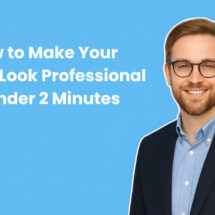Top 8 ways to monetize Instagram while building a sustainable audience
By Kaleigh Moore September 12, 2023
It’s been a journey of long days and extra time on weekends, but you’ve finally done it. Your Instagram account has more followers than you ever dreamed.
There’s only one problem.
You’ve been so preoccupied with building your audience that you’ve forgotten about the other end of building a business on Instagram. Monetization.
You have an ever-expanding cadre of loyal, engaged followers. You know there’s a market for what you offer. But before you go for a quick money grab, you should slow down and consider the best way to convert your audience into customers.
Do it the wrong way and you risk turning those followers away.
That’s why monetization should be more than a quick generator of cash. It should feel like a natural extension of the relationship between an Instagram creator and their audience.
So what’s the best way to monetize your Instagram? Let’s weigh the best options for you:
8 ways to monetize Instagram
Sponsored posts and influencer marketing
The fastest way to monetize your audience? Simple. Sell the ad space you’ve created.
You have a highly targeted audience who check your profile every day. There are plenty of businesses in search of an audience like yours. And they’re often willing to pay for the privilege of selling to them.
Enter sponsored posts, the preferred monetization method of many influencers. In a sponsored post, you’ll highlight a product, brand, or company.
You’ll tag the sponsor often as a recommendation to buy. The sponsor hopes your followers will scurry to click “order.”
If you have a million followers already, this won’t be hard. You can sign up for an influencer marketing platform like Upfluence and watch the opportunities roll in.
But not everybody has a million followers. Here’s how you can attract sponsorships as you build your following:
Establish niche relevance
There’s often a problem with paying Kim Kardashian or Addison Rae to advertise your wares. Audiences that big cost an arm and a leg.
If you’re a giant brand with a big budget, maybe you don’t mind. But other brands do have to mind their budget.
They’re happy to enlist entire armies of micro-influencers and nano-influencers. They don’t mind the “organic” approach.
Micro-influencers have smaller audiences—often defined as up to 1,000 to 10,000 followers. At this audience size, your chief advantage is niche relevance.
Niche relevance is more enticing for brands who want to squeeze every possible cent out of their sponsorship dollar. But you need more than a defined niche. You also need a niche that works on Instagram, like:
- Beauty
- Fashion
- Home products
- Travel
- Pets
- Food/nutrition
- Crafts/DIY
Become known for one thing. Take photographer Teresa Freitas, “the color lady.” You’ll see she’s not only a photographer, but works from a specific palette.
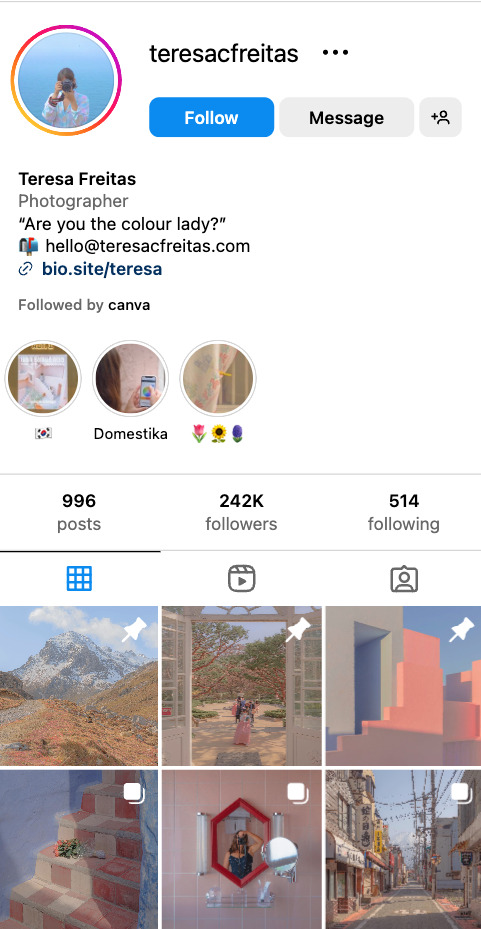
What’s your specific palette? What’s your key identifier? Find it, and you can still attract sponsored posts without a Kardashian-sized audience.
Credibility with your audience
There’s another reason brands like micro-influencers. Followers can talk to micro-influencers.
If your audience is 5,000 strong, it’s not as hard to reply to comments. Or maybe you respond in real-time on Instagram Live.
If your audience feels like they know you, every product recommendation feels more authentic.
But that’s not the case if you build up a quick, low-engagement audience as fast as possible. You might be able to squeeze one or two sponsored posts out of it, true. But the best sponsors are those who use you as a conduit to connect long-term with your audience.
A trend with staying power
Remember a few years back? When Instagram stories first came out, it was trendy for influencers to use them to attract attention.
“New post, check it out!”
But then everyone started doing it. Followers got annoyed. What initially drove engagement became a reason for people to unfollow you.
It’s tempting to jump on the latest trend on Instagram. You may even enjoy high engagement and rapid audience growth.
There’s just one downside. Easy come, easy go.
You’ll generally do well if you select one of the niches we listed. These are categories with established staying power on Instagram.
But don’t niche down so far that you expose yourself to becoming passe. Your Instagram audience may one day move on to another interest. Stick to valuable topics people will still care about in five years.
Affiliate marketing
Affiliate marketing is the closest thing to monetization out of a box.
The idea is simple: send someone to an affiliate link. They’ll enter a discount code and buy the product. When this happens, you’ll collect a commission on the sale.
You’re the salesperson in this scenario. The business handles all the backend of monetization. All you have to do is push the link and collect the checks.
The key advantage to affiliate marketing: it’s quick. You sign up for an affiliate platform, like Shopify or Amazon Associates. Then select a product relevant to your niche.
Include that link in your posts or bio links, then send traffic their way.
If you don’t like the overt advertising of affiliate marketing, you can also take an “influencer” approach.
Some influencers create curated shops on Amazon or LTK. LTK is popular with beauty and fashion influencers where people want to browse curated catalogs. This doesn’t feel like affiliate marketing because it’s a well-crafted list of recommendations.
Yet it still has the advantages of affiliate marketing. You send traffic to businesses, and in return, you get an easy cut of the proceeds.
Sell physical products
It’s not as difficult to sell physical products as you might think.
Between dropshipping, selling print-on-demand merchandise, or building your own merch store, you can probably get a shop up and running within a few days.
Ever looked into selling digital products, for example? You’ll notice many of the same platforms also handle physical stores. Sellfy and Shopify are as adept at handling digital offerings as physical products.
If you choose to sell physical products, you can think of Instagram as the first tool in your sales funnel. It’s the attention-capture tool for generating traffic for your store.
The key is finding ways to encourage repeat customers.
We’ve previously noted how repeat customers are five times more likely to buy than new customers. That’s why you need a way to “capture” every click you send from your Instagram to your shop.
For Tattge, a temporary tattoo shop, the key is using emails to highlight their latest releases. So they created daily emails to every email they captured. Each email shines a spotlight on a recent release—with the goal simply to get people to click.

Once they’re there, Tattge figures, customers are more likely to browse other temporary tattoos.
Your goal should be the same.
You can use your bio link to direct people to your online shop. Once people visit your store, set up a landing page. This can feature an email capture form, offering discounts to collect more of your audience.
Here’s a landing page template that you can start with.
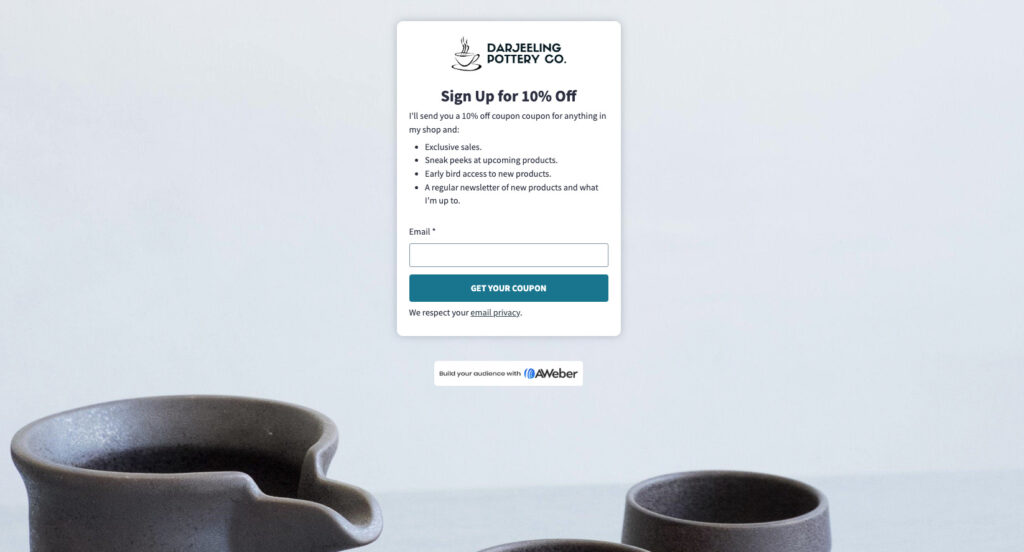
This way, you’re not always scrambling for new customers. You have a reliable list of steady customers and followers.
What if you run a traditional brick-and-mortar store? You can still use Instagram to enhance your monetization.
Offer Instagram-centric discounts to encourage more people in your area to follow you. Or offer discounts and promotions exclusive to your Instagram followers to encourage more foot traffic.
Build a community
If you have an Instagram following, you can think of it as a community. But how do you monetize a community if you’ve built it on a social media platform?
Start by engaging in spaces beyond the platform itself. Encourage your followers to engage with you on your website, or by signing up for your newsletter.
Establish a strong enough reputation with these followers, and you can even build subscription-based communities.
For example, Patreon is a top-tier platform for building and monetizing a subscription-based community. Buy Me a Coffee is a great alternative and more than a way for creators to accept online tips. You can use it to set up recurring membership payments.
Of course, you have to have an audience first. And while an Instagram following helps, you’ll establish more of a personal connection with that audience if you have their emails.
We’d recommend using a newsletter to build this personal connection. In our own newsletter, we’ll use Instagram “Reels of the Week” to connect what’s going on with Instagram with our email audience. You can do the same.
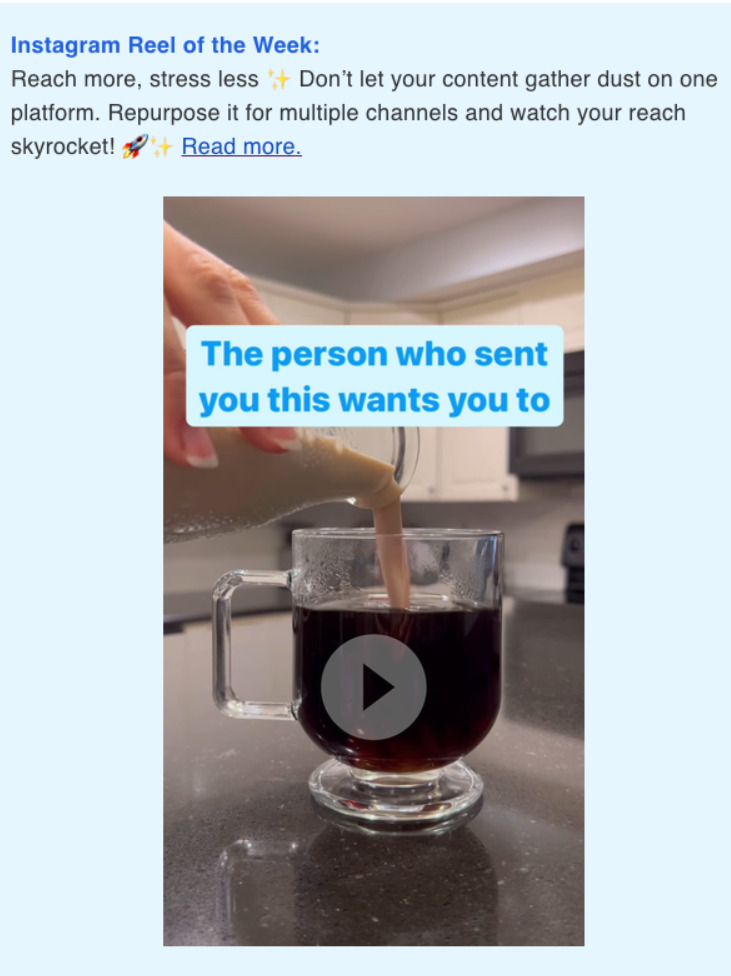
Lead generation for services or businesses
Monetization is simple if someone’s paying you to add their products to your posts, or if you can send Instagram followers to an affiliate link.
But what if you’re on Instagram for the sake of your business?
And what if that business doesn’t sell physical products?
Consulting, coaching, and service-based businesses can all work on Instagram, especially if they translate well to the visual medium. Consider:
- Photography, especially wedding photographers and portraits
- Cooking and restaurants
- Fitness coaching—where “before and after” results are especially engaging
- Business consulting
You can monetize your audience by using Instagram as a lead generator.
Take the example of Jack Morris, an Instagram with over 2.5 million followers. Monetizing an audience like that means there were plenty of options: affiliate marketing, physical products, and sponsored posts.
But Morris wanted to keep his audience by monetizing a business of his own. He created Tone Studio in 2020, offering tools for other influencers and creators who want to scale their content.
The advantage of using Instagram as a lead-generation tool for your business? You’ll own 100% of the leads you create. No commissions, no fees.
Instagram Live donations
Thus far, we’ve treated Instagram as a static, traditional social media platform.
But if you think of it as a streaming platform like Twitch, you can monetize your following with a completely different strategy.
You can accept tips and donations via Instagram Live.
But there’s a caveat here. Generally, this means you already have an audience built into the platform. Unless you have a worthy cause, asking for donations probably doesn’t boost your audience.
But Instagram Live donations are great for nonprofits. Take Global Citizen, also known as the Global Poverty Project. They combined influencer marketing with Instagram Live by teaming up with artists like Taylor Swift, Lady Gaga, H.E.R., and others for an at-home concert.
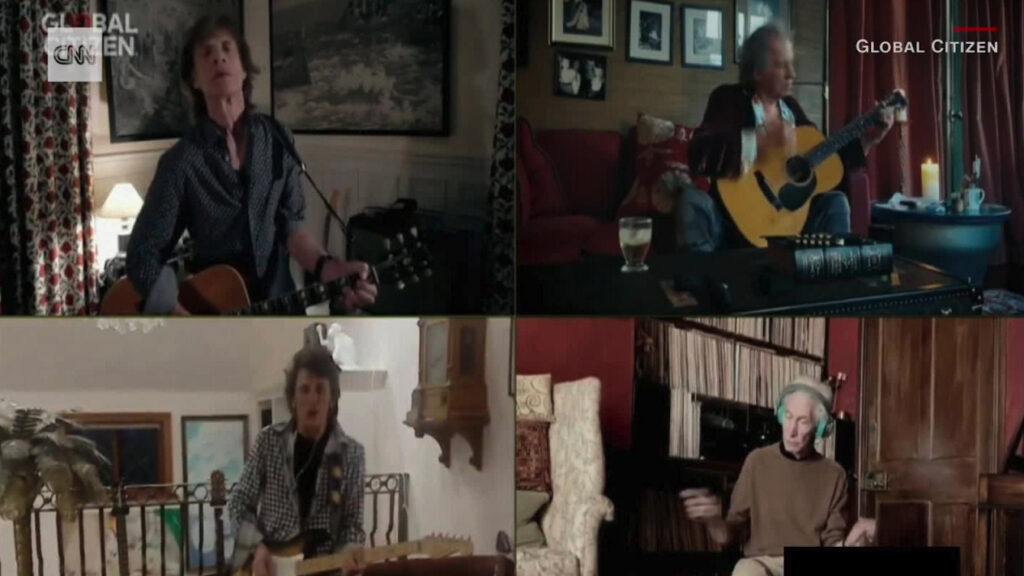
Hosting workshops, webinars, and other live events
You don’t have to sell knick-knacks or generate affiliate commissions to monetize an Instagram account. Maybe what you sell is all info-based. Here you can follow the example of Suite Brenda, which offers direct sales and marketing coaching.
Brenda monetizes her Instagram account by creating helpful content for her readers. She broadcasts webinars, and content workshops. She uses them as free lead magnets for her more personalized coaching services.
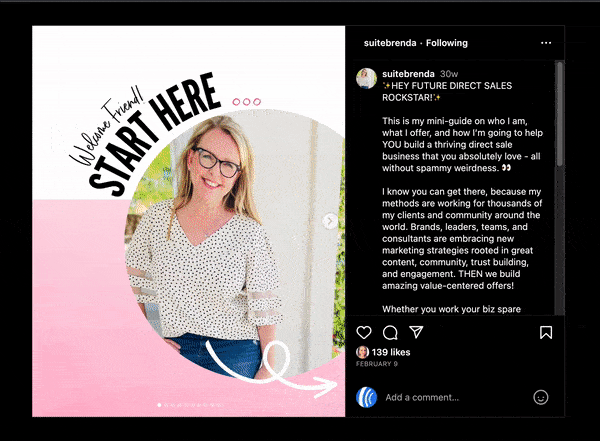
If your audience likes your content enough, you don’t even need to use these as lead magnets. You can charge for webinar attendance.
This is a great way to achieve monetization at scale. A webinar only takes a slice of your time, but if you have a thousand attendees willing to hear what you have to say, it’s like selling out a live event.
Monetize Instagram reels
Now making money from Instagram reels bonus program technically ended in March 2023, we’re listing it here in hopes that it comes back. This was a great way for creators to earn additional revenue.
So how did it work?
Instagram Reels are videos on the platform, up to 90 seconds long. To encourage people to use it, Instagram launched a feature called Reels Play Bonus.
It’s a bit like an ad revenue-sharing program. The more views your reels get, the more you earn.
That’s the upside.
The downside when it was first introduced? It was invite-only. So on the chance it comes back, be ready to capitalize by building that audience!
Even so, the program was for creators with under a million followers. This put a natural limit on the kind of payment expected for major engagement.
According to Kitty Parker, typical payouts for her 20,000-30,000 views per month range from $179 to $332.

To monetize your Reels, consider these strategies to boost your views:
- Choose a cover image for your Reel and share it in-feed. Some people keep them separate on their “Reels” page, but you can boost views by sharing Reels with your general audience. Just make sure the value of each Reel is present and justifies the full share.
- Create high-contrast thumbnails. People tend to click thumbnails that stand out to them. Remember many people choose which Reels to view based on a small thumbnail on their phone. Use contrasting colors (black and white, blue and orange) to boost visibility.
- Draw inspiration from popular Reels. On your own Instagram feed, follow trendy topics in your niche. This way, Instagram will keep feeding you successful Reels—which you can use to inspire your own.
Examples of creators monetizing Instagram
Bits of Bri
Brianna Koehler is a “Mom” influencer who talks recipes, decor, cleaning, and ideas for family fun. She embraces an eclectic mix of domestic content on her Instagram presence.
Her monetization strategies are just as varied. She sells products like scented candles, offers free printables, and sends followers to affiliate links on LTK.
Brianna’s Instagram shows you don’t have to limit your monetization strategies. You just need the right mix for your audience niche. For Koehler’s audience, cookbooks and shopping on LTK are natural links within her reels and stories.
If you can monetize your Instagram from your follower’s point of view, you’ll do just as well.
Don’t ask yourself how to make the quick buck. Ask yourself what you can sell that your followers will genuinely enjoy.
Huda Beauty
Huda Beauty, the brainchild of Huda Kattan, started out with makeup tutorials on Instagram. Her following eventually ballooned until Huda was a full-fledged beauty influencer.
But the secret to Huda Beauty’s success isn’t monetizing with other brands. Browse the latest listings, and you won’t find sponsored posts or affiliate links.
Kattan built up Huda Beauty into its own brand.
Her secret to audience-building? Value. Over the years, Huda Beauty has been assembling valuable content, much of which is available on Instagram for free:
- Beauty tutorials
- Product demonstrations
- Beauty hacks
- DIYs, like how to make a face scrub at home
Eventually, Kattan built entire product lines at Huda Beauty. It’s a testament to the power of Instagram monetization. With enough time and work, you can not only build an audience, but own everything you sell to that audience.
Noelle Downing
Noelle Downing talks about outfits, home decor, and living in NYC. A fashion influencer and creator, she shares snippets of her family life in upstate New York.
The key here: if your niche has built-in visual appeal, it will probably be easier to monetize on Instagram. For Downing, that means sharing a link in her bio to LTK.
At LTK, she keeps track of her outfit-of-the-day posts so her followers can shop for the same looks. It’s a natural leap from following Downing on Instagram to shopping what you see.
Many of her followers may barely remember clicking. The transition to her monetized content is seamless.
Lilly Singh
Lilly Singh is a Bollywood actress who’s built an Instagram following based on both her comedy and her acting chops.
Lots of her followers love seeing the transition she’s making to Hollywood. And that may be why she’s capable of building an engaged community. Lilly’s Library, for example, is her book club where she shares other South Asian stories.
Follow the links in her bio, and you’ll see she links to Unicorn Island, a fund dedicated to ending gender inequality.
Singh’s example highlights the different ways to monetize on Instagram. First, if you get people interested in your story, you can build membership communities. And people will happily join.
Second, you don’t have to limit yourself to monetizing a business. Singh’s Unicorn Island Fund is a separate entity—but with a strong tie-in to the female-empowering content Singh’s audience loves to follow.
How to monetize your Instagram following
Build a platform first
You can’t multiply by zero. Nor can you monetize zero followers.
Monetizing and growing your Instagram following starts with building an engaged community of followers who love your content.
But what do you post about? What kinds of Instagram content will generate engagement and attract followers?
If you’re starting from scratch, you might refer to our post on getting your first 100 newsletter subscribers. Many of the steps overlap:
- Choose a relevant niche that works for Instagram. We’ve highlighted niches like fashion, beauty, home products, travel, and pets. Remember: if it has visual appeal and plenty of available sponsors, it’s probably an effective niche.
- Capitalize on trends in your niche. Use Google Trends to identify where your audience interest is starting to peak. Be careful about hopping on fads, though—try to find trends with some staying power.
- Give Instagram a clear reason to follow you. In “How to Get Your First 100 Subscribers,” we noted that every newsletter needs a clear deliverable. Why subscribe? Take that same concept and apply it to your Instagram: what value do you create that’s apparent right off the bat?
- Leverage other platforms when possible. Have a successful YouTube channel? A loyal Twitter following? Send your followers to your Instagram and offer exclusive content on each platform to keep it interesting.
Start with one monetization method and experiment
The biggest step in your monetization journey will be when you ask for that first dollar. Be careful here. You don’t want to turn off the same people who made your account popular in the first place.
But don’t assume everyone will be turned off, either. People follow you for a reason. They find your posts valuable.
Maybe they’ll find your products valuable, too. Maybe they’ll find your community valuable. As long as you have a logical path from Instagram to sales, you won’t turn anyone off.
If you have an Instagram following, it’s high time you start thinking of it like a business. As Ally Pintucci noted: “If Instagram were gone tomorrow, would you still have a business?”
We recommend starting small. Try one monetization method first and gauge your audience’s interest.
From there, keep watching customer feedback to see what they enjoy. Then select the monetization from the list above to make your sales as smooth as possible.
Spark interest in your monetization
Even if you have an engaged following, you won’t necessarily go gangbusters the instant you post an affiliate link.
You may have to prime the engine first. Spark interest in your monetization offerings with some attention-grabbing strategies. These may be similar to how you might have kicked off your web presence in the first place:
- Run a contest. For example, if you have a membership community, offer a random prize to one of the first twenty people to sign up.
- Offer exclusives. Create exclusive, off-Instagram content for people who sign up to a webinar or buy one of your physical products.
- Build gated content. Keep offering free value on Instagram, but create gated content on your website. You can use this to spark interest in a community or paid newsletter.
- Send Instagram traffic to a free lead magnet. A lead magnet may not monetize you just yet, but it will start you down the path of building an audience you own.
Connect your Instagram to your business
No matter what brought followers to your Instagram account, there’s probably a way to monetize your audience.
But be careful. In the long term, niche selection and your monetization methods will be just as important as the size of your following.
And while you’re at it, don’t forget to move your audience off Instagram. That’s how you’ll build a sustainable business that isn’t platform-dependent.
To start your journey to moving your audience off social media and into your community, sign up to AWeber for free today.
 87% off ends soon!
87% off ends soon! 
